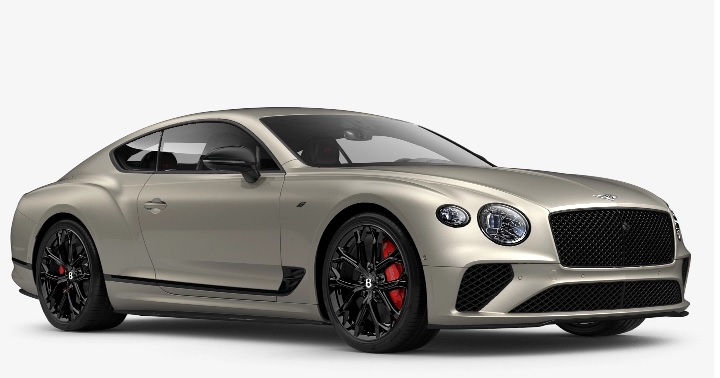

Coupe, 2 Doors, 4 Seats
550 Hp @ 6000 rpm.
137.6 Hp/l
318 km/h 197.6 mph
3996 cm3
243.85 cu. in.
8, V-engine
All wheel drive (4x4),
4850 mm
190.94 in.
2187 mm
86.1 in.
2165 kg
4773.01 lbs.
| Brand | Bentley |
|---|---|
| Model | Continental (Coupe) |
| Version | Continental GT III |
| Engine version | 4.0 V8 (550 Hp) AWD Automatic |
| Year production start | 2019 |
| Vehicle type | Coupe |
| Horsepower RPM | 550 Hp @ 6000 rpm. |
| Acceleration 0 - 100 kmh sec | 4 sec |
| Curb weight kg -lbs total |
2165 kg4773.01 lbs. |
| Overall length mm - inch |
4850 mm190.94 in. |
| Doors | 2 |
| Top Speed | 318 km/h 197.6 mph |
| Designation model | CVDA |
|---|---|
| Engine position and orientation | Front, Longitudinal |
| Cylinders | 8 |
| Position of cylinders | V-engine |
| Displacement (liters) |
3996 cm3243.85 cu. in. |
| Eng. horsepower RPM | 550 Hp @ 6000 rpm. |
| Horsepower per litre | 137.6 Hp/l |
| Weight / horsepower kg/hp - hp/tons |
3.9 kg/Hp254 Hp/tonne |
| Weight / torque kg/Nm - Nm/tons | 2.8 kg/Nm, 355.7 Nm/tonne
2.8 kg/Nm355.7 Nm/tonne |
| Torque Nm RPM lb-ft RPM |
770 Nm @ 2000-4500 rpm.567.92 lb.-ft. @ 2000-4500 rpm. |
| Fuel delivery system | Direct injection |
| Fuel type | Petrol (Gasoline) |
| Valvetrain | 4 |
| Engine aspiration | Twin-Turbo, Intercooler |
| Engine oil liters | quarts |
9.5 l10.04 US qt | 8.36 UK qt |
| Engine coolant |
15.9 l16.8 US qt | 13.99 UK qt |
| Emission certification | LEV III - ULEV125 |
| Powertrain architecture | Internal Combustion engine |
| Engine location | Front, Longitudinal |
| Drive configuration | All wheel drive (4x4) |
|---|
| Front brakes | Disc |
|---|---|
| Rear brakes | Disc |
| Brake control | Disc |
| Anti-lock brake system | ABS (Anti-lock braking system) |
| Wheels rims | 20 |
|---|
| Passengers seats | 4 |
|---|---|
| Trunk space min liter | cu. Ft. |
358 l12.64 cu. ft. |
| Overall length mm - inch |
4850 mm190.94 in. |
|---|---|
| Overall width mm -inch |
2187 mm86.1 in. |
| Overall height mm -inch |
1405 mm55.31 in. |
| Wheelbase mm - inch |
2851 mm112.24 in. |
| Curb weight kg -lbs total |
2165 kg4773.01 lbs. |
|---|---|
| Gross weight kg -lbs total |
2725 kg6007.6 lbs. |
| Capacities kg - lbs |
560 kg1234.59 lbs. |
| Fuel tank liters | gallons |
90 l23.78 US gal | 19.8 UK gal |
| Combined fuel consumption (WLTP) | 11.8 l/100 km 19.93 US mpg |
|---|
8 CYLINDER V-Engine
https://www.thecarspec.net/components/engine/8-cylinders-v